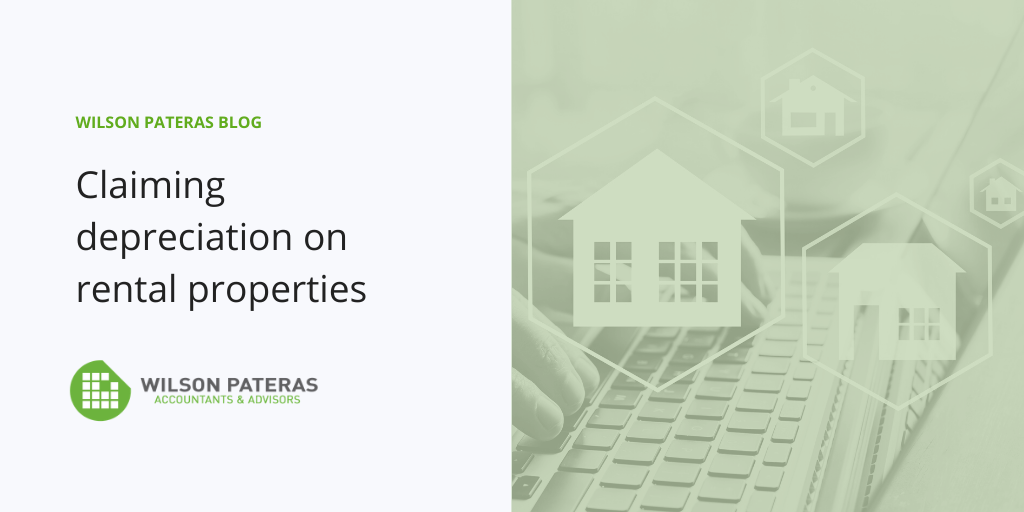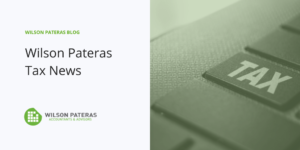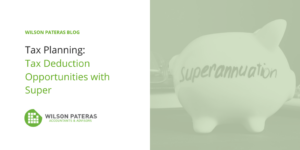
If you own a rental property, it’s important to claim all of your eligible tax deductions to maximise your return on investment. One of the most significant expenses you can claim is depreciation. However, this expense is easy to miss, because depreciation is not an out-of-pocket expense like other rental property expenses.
It is important to understand:
- What depreciation expenses you can claim.
- How much depreciation you can claim.
- What depreciation expenses you cannot claim.
- What depreciation expense records you should keep.
Rental property depreciation expenses you can claim
Depreciation is a financial term used to describe the decrease in value of an asset over time due to wear and tear. The Australian Taxation Office (ATO) allows you to depreciate rental property assets under two broad categories:
1) capital works, and
2) capital allowances (e.g. plant and equipment assets).
Depreciation expenses for Capital Works
Capital works assets are fixed to the rental property. Examples of capital works assets that are eligible tax-deductible depreciation expenses include:
- building renovations or extensions (e.g. adding an extra room or garage to your rental property),
- building alterations (e.g. removing or adding a wall), and
- structural improvements (e.g. adding a driveway or adding a retaining wall).
Depreciation expenses Capital Allowances
Plant and equipment assets are generally standalone, functional assets that are not fixed to the rental property. Examples of plant and equipment assets that are eligible tax-deductible depreciation expenses include:
How much rental property depreciation you can claim?
The depreciation rules differ for capital works and plant and capital allowances.
Capital works assets
Capital works deductions are available for any rental property built after 15 September 1987. Your depreciation expense must be spread over 40 years at the rate of 2.5% per year.
For example, if you spend $150,000 on a rental property renovation, you will be eligible to deduct $3,750 as a depreciation expense for the next forty years (i.e. 2.5% of the total expense per year).
If you have bought a rental property that was substantially (not cosmetically) renovated by the previous owner prior to sale, you will be entitled to claim the associated capital works deductions within the 40-year time period. In this situation, it’s wise to use the services of a quantity surveyor who will be able to identify less obvious renovations such as new plumbing or updated electrical wiring.
In addition, if you ever subsequently remove any capital works assets within the 40-year time period, you can claim any undeducted depreciation in the year the asset is removed. This is known as ‘scrapping’.
Plant and equipment assets
The full depreciation on rental property plant and equipment assets costing $300 or less can be depreciated in their first year of use. However, plant and equipment assets costing over $300 must be depreciated over their estimated useful life. The ATO provides a comprehensive table of the estimated useful life of a wide range of potential investment property plant and equipment assets.
Alternatively, you can engage the services of a quantity surveyor to assess your property’s plant and equipment assets to provide you with a depreciation schedule. You can also estimate the useful life of your assets yourself and depreciate them accordingly, provided you can justify your calculations.
There are two methods you can use to calculate the amount of depreciation you can claim on rental property plant and equipment assets:
1) the prime cost method. The depreciation of the asset would be spread evenly over its useful life. For example, a $2000 asset with a useful life of five years would be depreciated at $400 per year.
2) the diminishing cost method. The depreciation each year is calculated on the depreciated (i.e. diminished) value of the asset each year of its useful life. That means the depreciation tax deduction is highest in the early years of the asset’s life, rather than being evenly spread like it is with the prime cost method.
Rental property depreciation expenses you cannot claim
It’s important to note that from 1 July 2017, you are no longer allowed to claim depreciation on investment property assets that are purchased second-hand unless you are conducting an investment property business. This includes any assets that you may buy if you are living in your rental property while you are renovating it. For this reason, you should only buy new plant and equipment assets if you are not living in your property and it is either tenanted or available for rent.
However, private investors can continue to claim depreciation on second-hand assets that were bought and installed in their investment property before May 9, 2017 for the remainder of the asset’s estimated useful life.
What depreciation expense records you should keep
For capital works assets, you should keep all of the following expense records over the 40-year eligibility period:
- details of the type of construction work completed,
- the date the work commenced,
- the date the work was completed, and
- the cost.
All other rental property depreciation expense records (e.g. receipts for plant and equipment assets) should be kept for the life of the asset and then for another five years after you lodge your tax return.
How we can help
Our experienced team of tax advisors at Wilson Pateras in Richmond can answer any question you may have about the tax deductibility of depreciation or any other investment property expenses you have. They can help you to maximise your eligible tax deductions, so you pay less tax. As you can see, depreciation can be a significant tax-deductible expense that you can claim against the rental income that your investment property generates.
Contact us today for a complimentary, obligation-free consultation to find out how we can help you.





